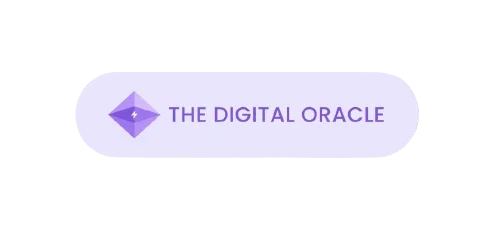Discover the power of Semantic SEO. Learn how to use related terms, structured data, and comprehensive content strategies to boost your rankings and user engagement.
What Is Semantic SEO?
Semantic SEO is an advanced content strategy that focuses on the meaning and context behind search queries, rather than relying solely on exact-match keywords. Instead of stuffing your articles with repeated phrases, semantic SEO encourages you to create in-depth, meaningful content that aligns with what users are actually looking for.
At The Digital Oracle, we believe in crafting content that speaks the language of both users and search engines. By embracing semantic SEO, you’re not just optimising for algorithms—you’re building content that delivers value and relevance.
Why Semantic SEO Matters More Than Ever
Search engines like Google have evolved. Thanks to algorithms like Hummingbird, RankBrain, and BERT, Google now better understands natural language and context. Semantic SEO ensures your content keeps up with this evolution.

Key Benefits of Semantic SEO:
Improved rankings for long-tail and related searches
Increased time on page and lower bounce rates
Better alignment with voice search and AI assistants
Enhanced authority in your niche
Need help with your SEO strategy? Check out our SEO Services for Australian small and medium businesses.
How to Implement Semantic SEO on Your Website
Here’s how you can use semantic SEO to strengthen your content marketing and organic visibility:
1. Start With Topic Clusters
Instead of individual blog posts on random topics, organise your content into thematic groups or clusters. For example, a pillar page on “Email Marketing” might link to supporting articles like:
How to Write Email Subject Lines That Convert
The Do’s and Don’ts of Email Campaign Automation
This structure builds topical authority and helps Google understand the context of your site.
2. Use Related Keywords and Synonyms Naturally
Use tools like Google’s “People Also Ask”, LSIGraph, and AnswerThePublic to find variations of your main keywords. Then, use them in:
Subheadings (H2s and H3s)
Meta descriptions
Image alt text
Within the body, where they fit naturally
3. Answer Related Questions
A great way to align with user intent is by answering questions people are already searching for. Try incorporating FAQ sections or headings like:
“What is the difference between SEO and Semantic SEO?” “Is keyword stuffing still relevant in 2025?”
This increases your chances of appearing in featured snippets and voice search results.
4. Use Structured Data Markup
Schema.org markup helps search engines interpret your content more effectively. This can lead to rich results in SERPs, such as:
Star ratings
Product availability
Event details
Learn how to implement it in our Structured Data Guide.
5. Keep Content Updated and Evergreen
Google favours fresh, updated content. Schedule regular content reviews and add new insights, stats, or FAQs to keep posts relevant.
Explore our Content Refresh Checklist to optimise your existing assets.
Tools to Help With Semantic SEO
If you’re ready to take semantic SEO seriously, these tools can make the job easier:
Surfer SEO – Helps with keyword context and related terms
Frase – Great for content briefs and question-based research
LSIGraph – Generate latent semantic keywords
SEMrush/Ahrefs – Competitive keyword gap analysis
Looking for help? Book a strategy call and we’ll help you build a game plan.
Real-World Example: Ranking with Semantic SEO
At The Digital Oracle, we implemented a semantic content strategy for a plumbing client targeting “emergency plumber Wollongong.” Instead of repeating the term 15 times, we created content around:
Common plumbing emergencies
How fast response times help
What to do while waiting for a plumber
Costs and availability FAQs
The result? A 68% increase in organic traffic and featured snippet placements for multiple related queries.
Conclusion: The Future of SEO Is Semantic
Semantic SEO isn’t just a trend—it’s the foundation of modern content marketing. When you focus on user intent, contextual depth, and natural language, you position your site as a valuable resource—not just another result.
Want to boost your SEO strategy the smart way? Let’s talk.
Other Helpful Reads:
Conclusion
Semantic SEO is no longer optional—it’s the foundation of modern search strategy. By understanding user intent, enriching your content with context, and leveraging the right tools, you’re not just improving rankings—you’re building lasting authority. Start thinking deeper, not broader. That’s the Digital Oracle way.
“Stop chasing keywords. Start matching intent. 🧠✨ Learn how Semantic SEO can unlock real rankings & relevance.”
Hire a team of expert marketers to handle the research and video creation process for you
Just because something worked for one type of video doesn’t mean it will always work. Your video marketing strategy needs to be flexible and adjust to people’s viewing behaviors for maximum impact.
Ready to grow your revenue with The Digital Oracle? Get a Free Consultation to Boost Your Business.
FAQs
To understand your audience’s needs, preferences, and behaviors, enabling tailored marketing strategies.
It allows marketers to create personalized content for specific audience groups, increasing engagement and conversions.
Absolutely. Many tools are scalable and offer free versions, making them accessible to businesses of all sizes.
Demographics, pain points, communication preferences, and motivations.
At least once a year or after significant changes in the market or customer behavior.





